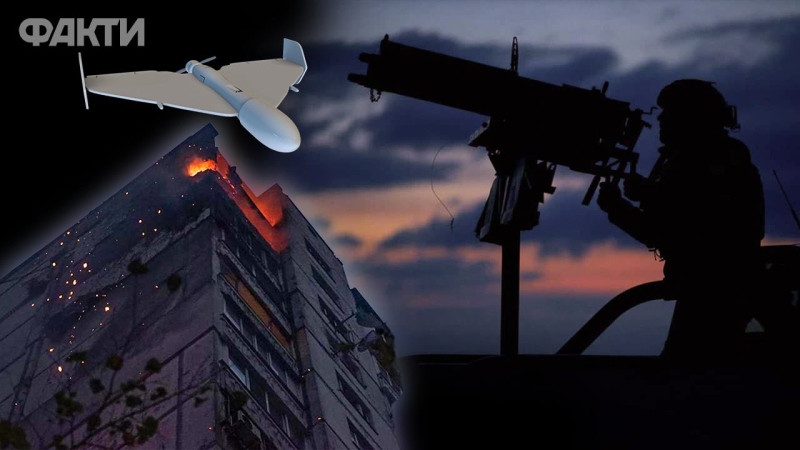
Russian troops carried out a massive drone attack on Kyiv and other cities in Ukraine. Powerful explosions were heard in the capital in the morning, and air defense forces were working on enemy air targets in other regions.
ICTV Facts analyzed what is known about the drone attack on the night of November 2, what tactics Russia is using and what it wants to achieve.
Drone attack on Kyiv: what tactics are Russian troops using
Kyiv City Military Administration spokesman Mikhail Shamanov said that the attack on the capital lasted more than eight hours with breaks.
Now watching
According to him, this indicates that Russian troops launched UAVs in several waves at night, and the last waves reached Kyiv almost during the day.
According to information from the head of the KGVA Sergey Popko, UAVs of the Russian Armed Forces entered the capital in groups. Before Kiev they were divided into single targets, attacked at extremely low altitudes to complicate the work of air defense forces and assets.
— They are currently using exactly this tactic, approaching the city of Shahed at low altitudes, meaning that the attacks are carried out in waves. They may be trying to circle around in certain areas, attracting the attention of mobile groups, — Mikhail Shamanov explained.
The KGVA spokesman noted that the main goal of the Russian troops is to confuse the Ukrainian air defense forces and assets as much as possible.
— That is, they are trying to get the mobile groups to move, thus creating corridors for the next waves to pass through. These are attempts to reconnoiter the weak points of the air defense and identify where exactly they are located, so that the next waves can bypass these locations, — he emphasized.
Aviation expert, leading researcher at the A.K. Antonov State Aviation Museum Valery Romanenkotold in a commentary to ICTV Fakty that Russia's goal is to terrorize the population of Ukraine.
— They are looking for where they can cause direct damage, destroy something with strikes, simply not let them rest and sleep peacefully. You see, the strikes are mostly at night, — the expert noted.
The raids are accompanied by strikes: air defense forces worked all night
The air attack was repelled by anti-aircraft missile troops, aviation, electronic warfare units, mobile fire groups of the Armed Forces of the Armed Forces of Ukraine and the Defense Forces of Ukraine.
ICTV Live Related materials Map of air alerts of Ukraine online: where there is a threat of a missile strike
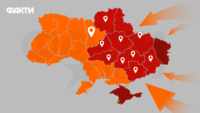
In Feodosia, the Novocherkassk ship, sunk by the Ukrainian Armed Forces last year, is being raised in parts from the bottom

An explosion thundered near the Dnieper: people were injured, including children
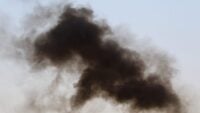
Reintegration Center for released military captives opened in Ukraine – Umerov

Remotely controlled: the Tavriya combat turret has been approved for use in the Ukrainian Armed Forces
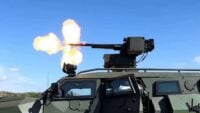

Photo: General Staff of the Ukrainian Armed Forces
According to the Ukrainian Air Force, on the night of November 2, Russian troops launched a strike with a Kh-31P guided air missile from the airspace of the Belgorod Region.
— Drone raids are accompanied by strikes on our air defense. The Kh-31P guided air missile is an anti-radar missile that is launched with the aim of breaking through, and is also combined with strikes on our air defense. Radars are the eyes of air defense and the guidance systems of anti-aircraft missiles, — noted Valeriy Romanenko.
In September 2024, the Russian Federation launched more than 1,300 Shahed missiles into Ukraine, according to data from the UK Ministry of Defense.
At the same time, the General Staff of the Armed Forces of Ukraine reported that in October of this year, the Russian Federation used 2,023 Shahed attack UAVs and unidentified drones against Ukraine.
About 1,185 of them were destroyed or suppressed, another 738 units were locally lost, and 29 UAVs left the airspace controlled by Ukraine, according to the General Staff.
— Here's the thing. Until then, the Russians had not launched Gerber and Geran drones together. Gerbers with these lenses that reflect radar beams become similar to Shahed, which is why there was an increase. But if you add up all the ones that were locally lost over a month, you won't see much of a difference, — noted Valery Romanenko.
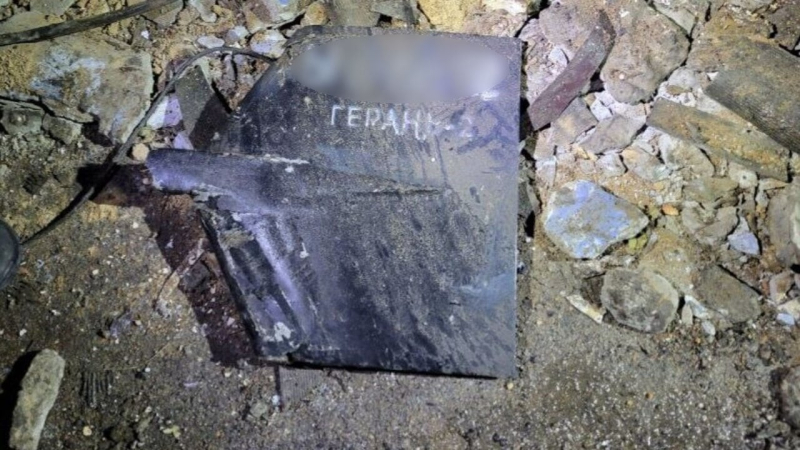
Photo: South Defense Forces Ukraine
As of 11:00, the Ukrainian Air Force confirmed the downing of 39 enemy UAVs in the Kirovograd, Kyiv, Sumy and Poltava regions, 21 drones were lost locally, five drones returned to the Russian Federation.
— What the Air Force tells us? 21 drones were lost locally — these are Gerberas. Another five UAVs returned to Russia — these are Gerans with Starlink or also reconnaissance drones that were simply accompanying attack UAVs in order to identify air defenses, — the aviation expert suggested.
In his opinion, Russian troops are trying to terrorize the civilian population with Shahed drones, because they strike at objects with known coordinates.
— They are not suitable for military purposes. Military facilities will be covered by air defense, for example, machine guns will be installed, and the Shahed will be shot down on approach. Civilian objects are mostly unprotected. The military is currently protecting them, but in general, the Russians are letting them in where not everyone can protect. Therefore, the goal of these strikes is to demoralize and terrorize the population of Ukraine. You see, we are being trained to be attacked around the clock, — summed up Valery Romanenko.

